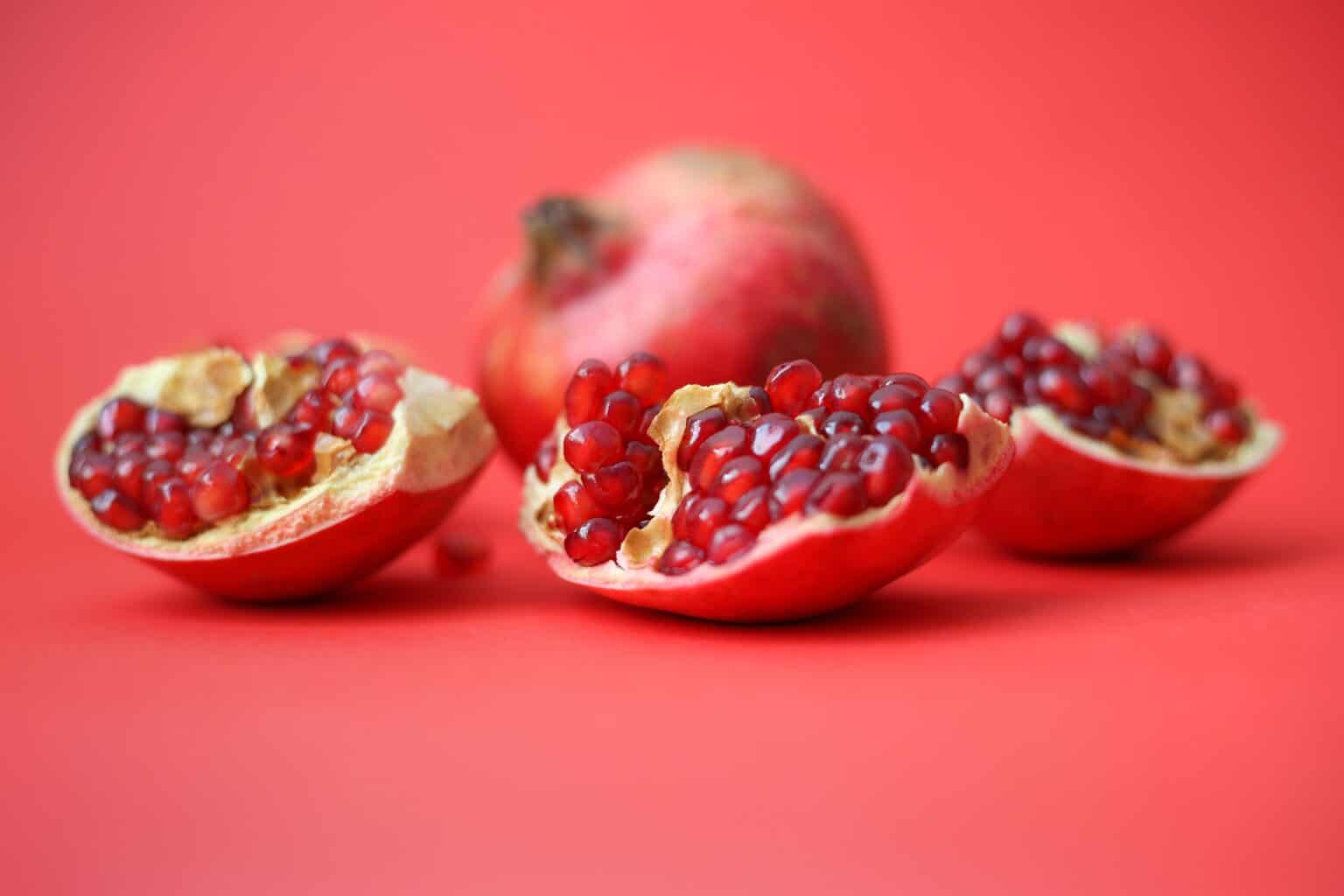My fascination with pomegranates started with the bowls of pomegranate arils I enjoyed as a snack when I was little and grows with each recipe I develop. Over the years, I must have cut, seeded, and juiced almost a quarter ton of pomegranates, half of which were for the recipes I developed for my book, The Artful Baker. The first one is the Pomegranate Sorbet, which my friends deem the only dessert that may be enjoyed without the slightest guilt after an indulgent New Years Eve meal (amateurs!) and the second one is the Pomegranate Jam. Earlier versions of both of these recipes are on my blog (here and here), but I highly recommend the versions in my book, especially the updated version of the pomegranate jam (with homemade green apple pectin) as it completely changed my jam making forever.
Both recipes call for fresh, hand-squeezed pomegranate juice. Using a juicer might seem like a shortcut, but I strongly advise against it as the tannins in the membranes will make the juice bitter. Juicing pomegranates by hand is easier than you might think, and it’s well worth the effort. Theoretically, you could substitute store-bought fresh pomegranate juice, but at least as far as the jam is concerned, I just can’t see the point of preserving something that comes in a bottle. If we’re thinking alike and pomegranates are bountiful where you live, let’s start.
Each medium size pomegranate will yield about 1 cup of seeds. Use them in salads, drop them in drinks, or enjoy them straight-up.

HOW TO CUT A POMEGRANATE
Holding a paring knife at a 45-degree angle, carve out the crown of the pomegranate by cutting around it in a circle. If the ridges of the fruit aren’t pronounced, after removing the crown, score the pomegranate crosswise about 1/2 inch (1.3 cm) below the crown and peel the rind above to expose the sections divided by the membranes. Score the pomegranate lengthwise (top to bottom) about 1/8 inch (3 mm) deep along the ridges into (typically six) sections, cutting through the red rind and the albedo (pith) underneath but avoiding the arils. Gently pull apart the pomegranate into sections.
HOW TO CHOOSE A POMEGRANATE
A perfectly ripe pomegranate should feel heavy for its size, have pronounced ridges with flat areas on each side (rather than a perfectly round shape), and a matte, rough, leathery skin without any cracks or soft spots. Pomegranates with yellow, green, light pink, or light orange rinds may be a sweet variety and aren’t suitable for the recipes in this book. Look for ones with deep red, burgundy, or reddish-brown rinds, which will encase deep-red arils that are both sweet and tangy.
How many cups of seeds are in a pomegranate
FAQ
How much seed do you get from one pomegranate?
How much does 1 cup of pomegranate seeds weigh?
How many pomegranate seeds should I eat a day?
How many seeds does a pomegranate yield?
How many pomegranate seeds are in a cup?
This singular cup amounts to approximately 552 pomegranate seeds derived from just that one fruit. Surprisingly light in weight, these edible seeds collectively tip the scales at around 5 ounces. Now, the burning question: Is a cup of seeds sufficient to craft a glass of pomegranate juice? You’ll find the answer to that question in this article.
Should one swallow the seeds of pomegranate?
Yes, in addition to being rich in fiber, they are full of antioxidants and vitamin C, which improve skin health, and are also a source of iron, zinc, magnesium, manganese and calcium. However, consume only the pinkest ones, as brownish or yellowish seeds are astringent.
How many calories are in a cup of pomegranate seeds?
A cup of pomegranate seeds contains approximately 144 calories. However, due to their high nutrient content, pomegranate seeds are considered a healthy and nutritious snack. 6.
Do pomegranates have a higher seed count?
Pomegranates exhibit diverse sizes and abundant seeds, with the average pomegranate tipping the scales at 9 ounces. As a general rule, larger pomegranates tend to house a higher seed count. How do we know this? We ventured into our backyard, collecting pomegranates of various sizes, and meticulously documented the seed count.
